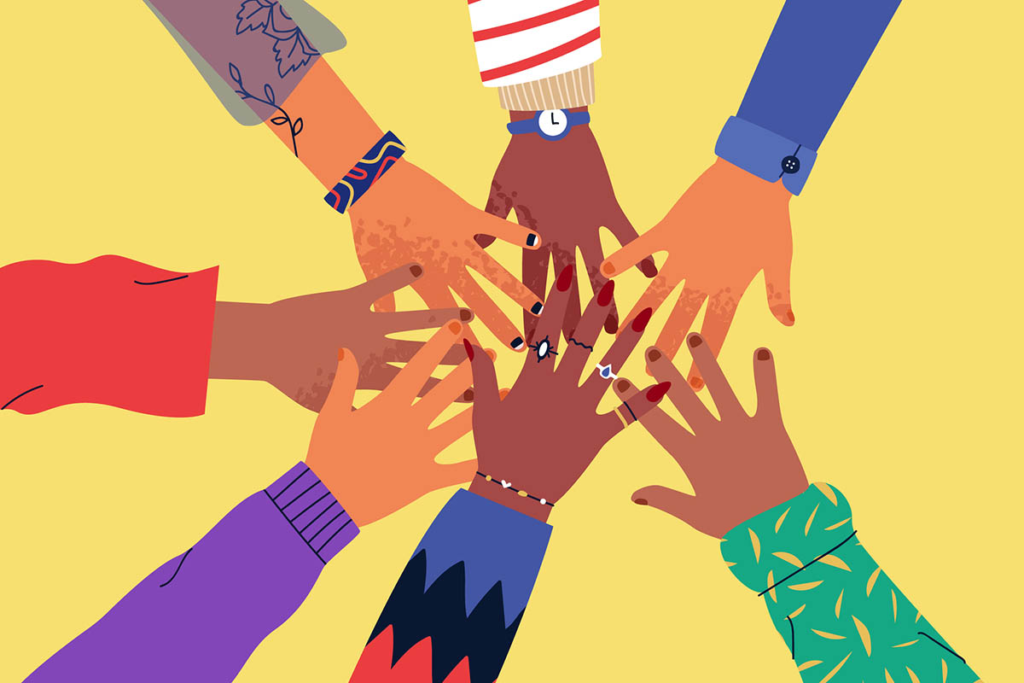
Summary: Creating a safe and inclusive classroom is essential for students to feel supported, valued, and motivated to learn. Teachers play a crucial role in fostering a positive and welcoming environment that promotes diversity, equity, and inclusion. Here are practical tips (and one that is unique and powerful) for education leaders to create a safe and inclusive classroom.
Dear Dr. Sylvia,
I hope you remember me. I am a sixth-grade teacher, lucky enough to participate in the Total Leadership Connections program you facilitated in PA.
It was seven years ago, and between the Pandemic and the polarization in our world, I need a refresher course now.
Everyone, children and faculty alike, is living with so much fear. Any loud sound makes us cringe. The youngsters are not laughing and joyful as they were in the past.
Furthermore, I have concerns about children without friends. They are often made fun of and bullied.
After that, I worried that one day I would check the daily news and find one of my students was shot or the shooter.
Fear is not an overreaction; think about the first grader who shot his teacher.
For example, what can we do to make the classroom safer and prepare our students for more than just reading, writing, and arithmetic?
Moreover, how do we transform old patterns of exclusion and then make negative comments about each other?
In other words, we are living in mean-spirited times. I need to help make a positive change for my students and myself.
Ultimately, I want to leave my youngsters a legacy of health and support as they prepare to enter middle school.
Signed,
Connecting Heart and Mind
Dear CHM,
Of course, I remember you. I especially think about your passion for educating “the whole child” and not just filling their minds with facts.
Here are some thoughts to help you create a classroom experience remembered throughout life.
I delightfully want to share the story of a very pattern-aware educator. Please read and pass it on to your colleagues.
Build Positive Relationships with Your Students.
Firstly, building positive relationships with your students is one of the best ways to create a safe and inclusive classroom.
Please get to know your students individually, listen to their stories, and show empathy and respect for their backgrounds and experiences. Use their names, acknowledge their strengths, and provide opportunities for them to share their thoughts and ideas.
In addition, using each other’s names is vital for good relationships and communication. When you talk with them, saying a person’s name will make them feel seen and heard. It is a sign of respect and appreciation.
Set Clear Expectations and Boundaries
Creating a safe and inclusive classroom also requires setting clear expectations and boundaries.
Develop a set of rules and procedures that promote mutual respect, responsibility, and accountability.
Communicate these expectations to your students and model them consistently. Address any disruptive or disrespectful behavior promptly and constructively.
For example, please consider that when you must say “NO.” It is a complete sentence. You do not have to defend, explain, or justify your position.
Youngsters do best when boundaries are clear and they know the consequences immediately.
Provide Multiple Opportunities for Participation and Feedback
Another way to create a safe and inclusive classroom is by providing multiple opportunities for participation and feedback. Use a variety of instructional strategies that engage different learning styles and preferences.
Encourage all students to participate in class discussions, group activities, and projects. Provide regular feedback that is specific, constructive, and supportive.
One teacher of a ninth-grade English class told me of the shock she felt when she put her class in small pods of 4 to discuss the book they studied. That was fine. The following request was for them to talk with each other about changes they wanted in the curriculum.
This open-ended conversation was a disaster.
The youngsters all grabbed their phones to find ways to respond. When told to put their phones away, they became hushed.
After that, she realized that most of her class did not know how to converse without a phone as a backup.
She has implemented a weekly “Let’s Just Talk” session in her class schedule.
The youngsters are starting to talk together without a phone in sight!
Celebrate Diversity and Inclusion
Creating a safe and inclusive classroom includes diversity and inclusion.
Acknowledge and appreciate the diversity of your students’ backgrounds, cultures, languages, and abilities. Incorporate culturally responsive teaching practices that reflect and respect their identities and experiences.
Use inclusive language and materials that represent diverse perspectives and voices.
Set a time to share stories from the family’s past.
My book “UNIQUE: How Story Sparks Diversity, Inclusion, and Engagement” offers many ideas.
Address Bias and Stereotypes
Creating a safe and inclusive classroom also requires addressing bias and stereotypes. Be aware of your preferences and assumptions and challenge them regularly.
Provide opportunities for your students to learn about and address bias, stereotypes, and discrimination. Create a classroom culture that values equity, fairness, and social justice.
Have the students watch a film at home and be ready to discuss it in class.
Here are some excellent choices: Hidden Figures, Moana, The Boy Who Harnessed the Wind, Wild Rich Asians, and Remember th Titans.
In conclusion, creating a safe and inclusive classroom is a continuous and collaborative effort that involves teachers, students, families, and communities. By implementing these practical tips, you can help create a positive and supportive learning environment that benefits all students.
Remember to be intentional, responsive, and compassionate in your teaching practice, and strive to learn and grow alongside your students.
Here is the story I promised. This shows the power of being pattern-aware and the benefits of this thinking.
Pattern Pioneers go past old models of defending, explaining, and justifying.
Friday afternoon, Danny’s teacher asks her students to take a piece of paper and write down the names of four children with whom they’d like to sit the following week.
She also asks the students to nominate one student they believe has been an exceptional classroom citizen that week. All ballots were privately submitted to her. The children know that these requests may or may not be honored.
Every Friday afternoon, after the students go home, Danny’s teacher takes out those slips of paper, places them in front of her, and studies them. She looks for patterns.
Who is not getting requested by anyone else?
Why don’t some even know who to request?
How do some never get noticed enough to
Who had a million friends last week and none this week?
Danny’s teacher is not looking for a new seating chart or “exceptional citizens.”
Behavior patterns repeat until we pay attention to them.
Danny’s teacher is looking for lonely children. She’s looking for children who are struggling to connect with other children.
She identifies the little ones falling through the cracks in the class’s social life.
She is discovering whose gifts are going unnoticed by their peers. And she’s pinning down- right away- who’s being bullied and who is doing the bullying.
It’s like taking an X-ray of a classroom to see beneath the surface of things and into students’ hearts.
It is like mining for gold – gold being those little ones who need a little help – who need adults to step in and TEACH them how to make friends, how to ask others to play, how to join a group, or how to share their gifts with others.
It’s a bully deterrent because every teacher knows bullying usually happens outside her eyes.
Often, kids being bullied are too intimidated to share. But as she said – the truth comes out on those safe, private, little sheets of paper.
Danny’s teacher explained that she had used this simple, ingenious idea since Columbine. Every single Friday afternoon since Columbine.
All violence begins with disconnection.
All outward violence begins as inner loneliness. She watched that tragedy, knowing that overlooked children would eventually resort to being seen by any means necessary.
And so she decided to start fighting violence early, often, and with the world within her reach.
What Danny’s teacher is doing when she sits in her empty classroom studying those lists written with shaky young hands – is SAVING LIVES.
Love, loneliness, success, and failure are all pattern-driven.
And what she learned while using this system is something she already knew: that everything – even love, even belonging – has a pattern.
She finds those patterns through those lists – she breaks the codes of disconnection. And then she gets lonely kids the help they need.
What a way to spend a life: looking for patterns of love and loneliness and stepping in every single day- and altering the trajectory of our world.
TEACH ON, Pattern Pioneers! You are the first responders, the front line, the disconnection detectives, and the best and ONLY hope we’ve got for a better world. What you do in those classrooms when no one is watching- it’s our best hope.
Here’s to your success,
Sylvia Lafair
PS. To all educators ready to help bring “the whole child” to school, I would like to offer, as a gift, a copy of my best-selling book “Invisible Stress (It’s NOT What YOU Think).”
Please e-mail me at sylvia@ceoptions.com, and it will come to your inbox immediately.


